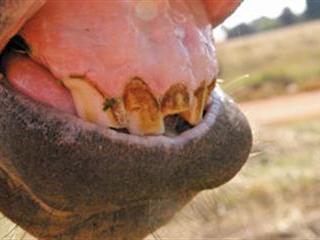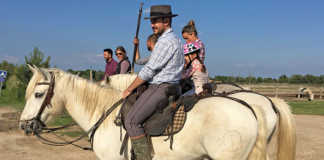
As a young adult I owned a fussy eater – a big, skinny Thoroughbred called Digby. Now, like most horse owners, I love a well-rounded, shiny horse. And it was so frustrating that Digby wouldn’t gain weight. But it did mean I learnt to deal with horses that have ‘eating disorders’.
If your horse isn’t ill or doesn’t have dental issues, and isn’t eating, it’s a fussy eater. If you have one, you’ll know exactly what I’m talking about. Then, by contrast, there’s the horse who bolts its food. This is not only a discipline issue, but could also cause ‘choke’ and colic, among other problems. Here are some tips on how you can overcome or at least control these and other forms of ‘eating disorders’.
The picky eater
It may be your horse is fussy because it’s overwhelmed at the amount of food put before it. ‘Over facing’ a horse can put it off its food altogether. Measure out the amount of feed your horse needs to eat in a day and place it in a bucket with its name on it. Then feed it a smaller portion more often. A coffee cup-full every time you walk past its stable works wonders.
If you can’t be on hand for multiple feedings, you may want to get an automatic feeder to do the job for you. Some horses require a quiet, peaceful environment to eat in. If you’re in a big stable yard with many horses, the commotion that often accompanies feeding time may be too distracting and stressful for the horse. Find a quiet place for it to eat. For example, leave it and its friend in a paddock to eat, and then bring them in after their food is finished.
The slow eater
If it is a slow eater, leaving it alone in the stable block while the other horses are out in the paddocks to finish its meal could be counter-productive, as separation anxiety may take over. Let a few mates keep it company (occupy them with extra hay) while it finishes up, and then turn them out together.
The speed eater
A horse that bolts his food exhibits bad manners. Even the classic ‘salt rocks in the bottom of the bucket’ tactic only serves to slow it down without addressing the core issue. Besides, an especially resourceful horse can find a way around such tricks.
Instead, try feeding small amounts more often. Use a shallow trough and spread the feed in a thin layer, so the horse can only nibble a little at a time.
You also may want to feed it hay before the meal to take the edge off its appetite. Finally, try putting hay over the feed so the horse needs to rummage through it to get at the grain. This serves two purposes: it slows it down and tempers the possible effects of carbohydrate overload.
Check-ups
It’s very important to have your horses’ teeth checked twice a year by a qualified equine dentist or a vet. Also de-worm with the change of season to make sure your horse is getting the feed and not the parasites.
Don’t waste
Horses are trickle feeders and require small amounts of food at a time. Any amount over 2kg at a time isn’t absorbed. You’re simply creating expensive manure and not a shiny, well-rounded horse.
Tasty tips
As nutritious, plain or cubed feed may not be as tasty as muesli-style food, try drizzling black strap molasses on top, or mixing in some apple sauce or grated carrot and apple. Adding a tin of milk stout to your horse’s feed can also encourage a fussy eater to eat. The extra vitamins in the milk stout will give it beautiful dapples.
Contact Kim Dyson on 082 888 6511 or at [email protected]. Please state ‘Horse therapy’ in the subject line of your email.












